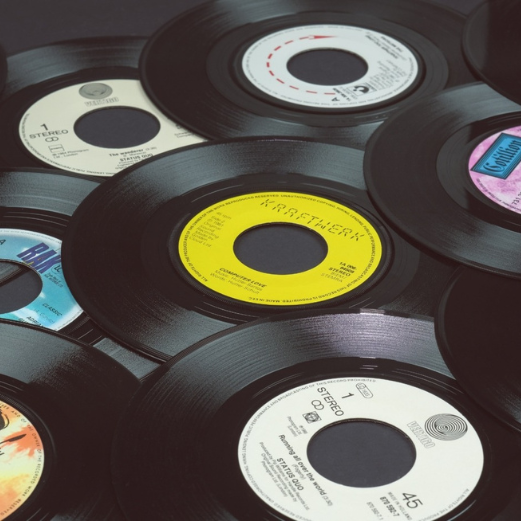
Does size matter?
I am excited to reveal the first details of our records, specifically their size!
Records come in many different sizes and speeds. The most common are the the long play 12-inch playing at 33 1/3 rpm for albums and the 7-inch and 10-inch singles format spinning at 45 rpm.
But there has always been a breadth of dimensions from 3-inch Japanese vinyl containing children’s music to 4-inch pocket-sized records for on-the-go in the 60s. Collectors also have prized 5, 6, and 8-inch records. There’s even a 9-inch limited edition by Nine Inch Nails.
Now, cue the drumroll, please. Our pure precious records will be 5 inches in diameter, perfectly engineered to hold a single and be played on any manual record player. Due to the incredible properties of precious metals, the grooves are engineered more tightly than on vinyl, allowing for more music in the same amount of space. Fun fact, the very first disc records made by inventor Emil Berliner were 5 inches too!
Where did 3-inch records come from?

The Japanese vinyl industry, known for quality pressings and innovation, made the 3-inch records popular in the early 2000s. Japanese toymaker Bandai designed and produced a special small red and white player. Three series of singles were made: Oldies Hits by Judy Collins, The Monkees, and Otis Redding, theme songs from Japanese anime, and songs from the kids TV show Hirake Ponkikki. Similar to trading cards, each record’s packaging only indicated its series, not its exact content. The format caught Jack White’s eyes while on tour and the White Stripes subsequently released the first 3-inch singles in the U.S.
Why do some records have a bigger hole?

Well, this one is all about turf wars. When Columbia first came out with the LP in the lates 40s, its competitor RCA did not want to be outdone and designed a turntable that could automatically stack records, allowing for an overall longer play time. These 7-inch single records had a bigger center hole and could only be played on turntables with a larger spindle. RCA outdid Columbia on length, but in the end consumers wanted more flexibility. So turntables with multiple speeds and spindle adapters that could play all the different sizes won out and are still most popular today.
